|
The Sunbeam Motor Car Company Limited, formed in
March 1905 produced large numbers of cars at Moorfield Works, Upper
Villiers Street, Wolverhampton. The cars were available in many forms,
including running chassis, which were available to anyone wanting to add
their own bodywork. It is likely that some of the chassis ended-up as
lightweight vans and lorries.
Sunbeam did build a small number of lightweight
lorry and van bodies for some of its standard car chassis, but it was
always a low-key affair, cars came first.
During the early part of the First
World War, Sunbeam produced military staff cars and
ambulances based on the well tried and tested 16 hp.
chassis. |
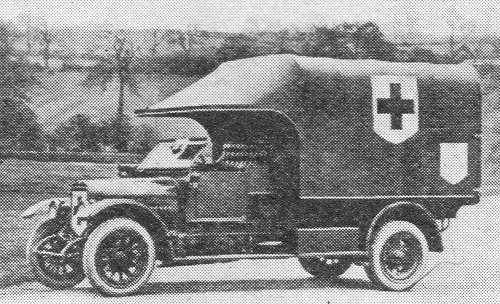 |
A Sunbeam ambulance. |
| Another Sunbeam
ambulance. |
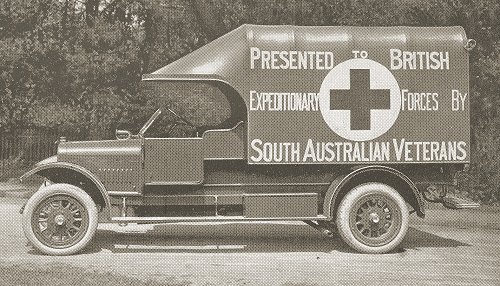 |
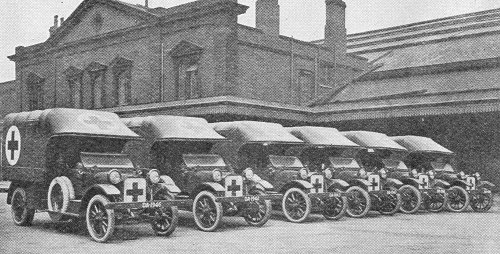 |
A line-up of Sunbeam
ambulances outside Wolverhampton Low Level Railway
Station. |
| Another row of Sunbeam
ambulances outside the railway station. |
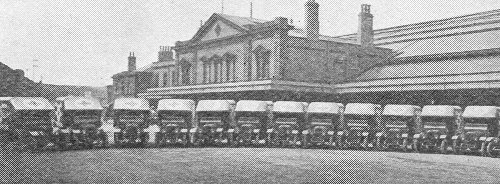 |

| Large numbers of Sunbeam ambulances were supplied to
the British and allied forces, including the Russian
army. In 1915 the government insisted that production of
the Sunbeam ambulances and staff cars should be handed
over to the Rover Car Company so that Sunbeam could
concentrate on production of much-needed aero engines
and aircraft. Although Rover wanted to put its name on
the vehicles, it was not allowed to do so. As a result,
during the war, vehicles carrying the Sunbeam name were
built in Coventry by Rover.
By the late 1920s car sales were declining and so the
company turned its attention to the growing market for
buses. In 1928 Hugh Rose designed a 6-wheel chassis, with an 8 litre,
6-cylinder engine called the 'Sikh', followed in 1929 by the 4-wheeled 'Pathan'.
They were primarily designed for bus use, but a number
of lorries were built around them. Only a small number
of chassis were made.
1931 saw the formation of Sunbeam Commercial
Vehicles, which produced large numbers of trolley buses.
By 1934 the Sunbeam group as a whole was in financial
difficulties, people no longer wanted expensive,
slightly old-fashioned cars. The solution was to be the
Sunbeam ‘Dawn’, but it was slow to sell, and there were
initial problems with the design. £3½ million had been spent on
development and tooling costs for the new car, but it
wasn’t recovered. At one point, money was so short
that wheels and tyres from half completed cars had to be
removed to meet the weekly wages bill. On November 17th,
1934 Sunbeam Commercial Vehicles became a limited
company.
Things didn’t improve and Sunbeam
soon went into liquidation. In July 1935 S.T.D. and Sunbeam
Commercial Vehicles Limited were purchased by Rootes
Securities, who had no interest in high quality cars,
only volume production. Rootes kept the Sunbeam name and
quickly closed the car building part of the factory.
In December 1935 bus manufacturer
AEC (Associated Equipment Company Limited) became
interested in Sunbeam Commercial Vehicles Limited. AEC’s
managing director C. W. Reeve, and AEC’s chairman J. T.
C. Moore-Brabazon joined the board. This resulted in the
production of a Sunbeam bus built on an AEC chassis, and
powered by a Gardner diesel engine. The project seems
to have been a failure as few were sold. |
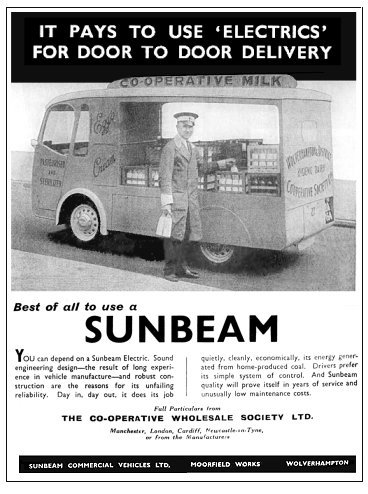 |
At this time the company also produced crankcases
for AEC, stampings for Ford, and battery-powered vehicles such as milk
floats, like the one in the advert opposite, which is from the Co-operative
Productive Review.
Much of the Moorfields site, where the cars were
built, was soon acquired by Villiers. By 1944 AEC had lost interest in
Sunbeam Commercial Vehicles Limited, which was sold to the Brockhouse
Group in 1946, after becoming an important source of machine tools for
the group. In 1948 Brockhouse changed the name to the Sunbeam Trolleybus
Company, which in January 1949 was acquired by Guy Motors.
In 1953 production moved to the Guy factory in Park
Lane, were an extension had been built to the machine shop. A sad end
for Sunbeam, especially as so much had been achieved during the glorious
half a century at Moorfields. |
|
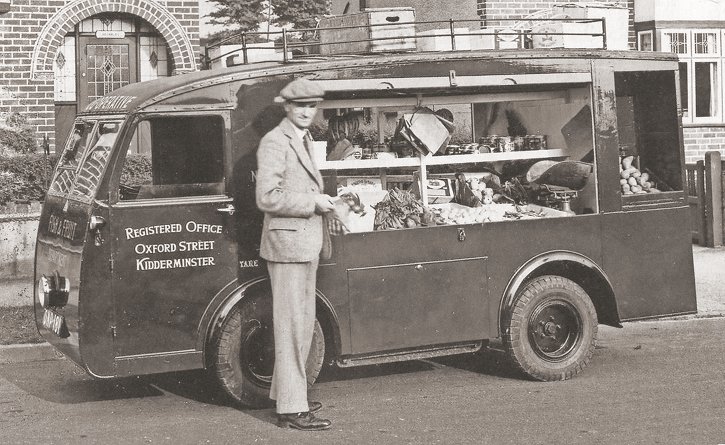
A Sunbeam 'float' delivering
vegetables. From a newspaper cutting from an unknown
newspaper. |
|